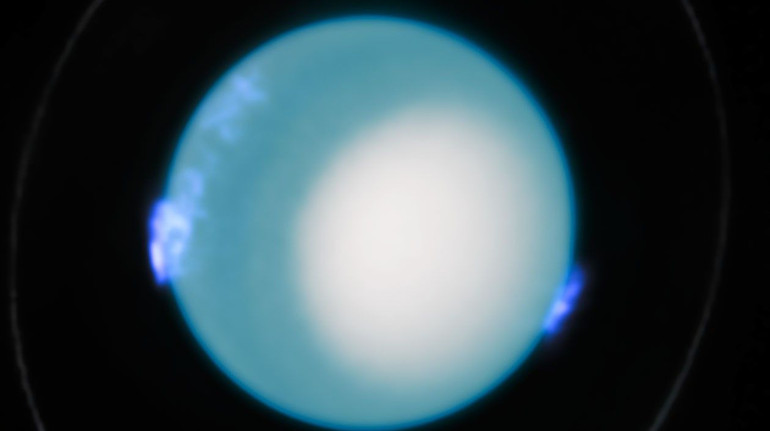Astronomers first measured Uranus’s rotation

The image of the polar glows of Uranus, which made the Hubble Space Telescope on October 10 2022
Photo: ESA/Hubble, NASA, L. Lamy, L. Sromovsky
The international group of astronomers made a breakthrough in the study of one of the most mysterious planets of the solar system – Uranus.
Using data from the Hubble Space Telescope, the researchers were able to determine with the unprecedented accuracy at what speed the inner part of the planet rotates.
The accuracy of the data defined using the innovative technique is 1000 times higher than previous estimates, report In NASA. The results of their research Posted In Nature Astronomy.
So far, scientists have relied on the inner speed of Uranus, made in 1986 during the span of the VOYAGER 2 probe.
However, in the course of more than a ten -year observation of the Polar glow on Uranus with Hubble, the telescope regularly recorded the planet’s ultraviolet radiance, which allowed to create models of magnetic field that accurately reflect the change in the position of magnetic poles over time.
Unlike the polar glows on earth, Jupiter or Saturn, the radiance on Uranus behaves extremely unpredictable. This is due to the fact that the magnetic field of the planet is strongly inclined and substantially displaced relative to the axis of rotation.

The observation of the telescope over the polar glows lasted more than ten years
Photo: ESA/Hubble, NASA, L. Lamy, L. Sromovsky
This approach showed that Uranus is full of 17 hours, 14 minutes and 52 seconds – It is 28 seconds longer than it was thought.
New results allow you to better understand the unique magnetosphere of uranium. Due to this, the researchers not only clarified the period of rotation of the planet, but also created an important new coordinate system that will become a benchmark for scientists.
« Our measurement not only creates a new reference point for the planetic community, but also solves an ancient problem. It is that previous coordinate systems, based on outdated periods of rotation, quickly lost accuracy, and this made it impossible to track the position of magnetic poles.
With a new long -lasting system, we can compare the observations of a glow, made in almost 40 years, and even prepare for a future mission for Uranus « , – explained the head of the team Laurent Lami from the Paris Observatory.
Earlier James Webba Telescope for the first time recorded Polar glow on Neptune – the farthest planet from the sun. Scientists have tried to see them since 1989.







